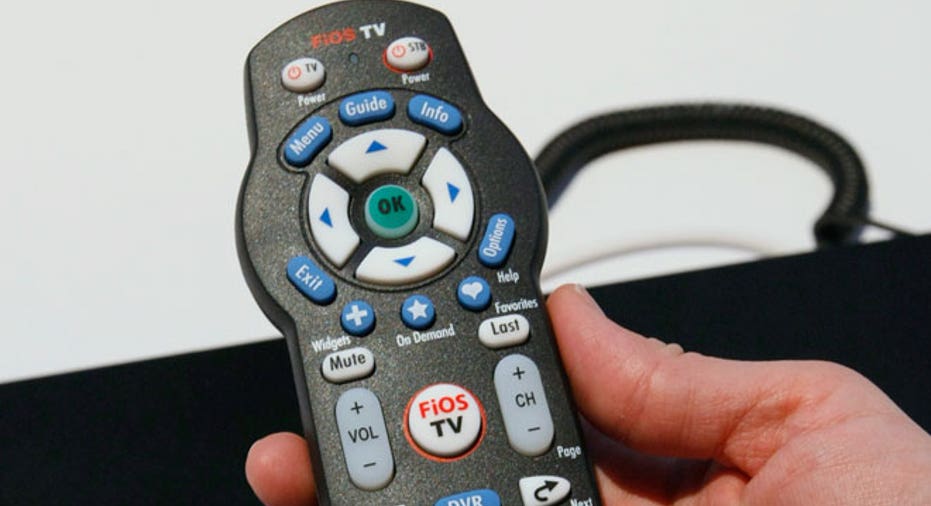How Big Was Cord Cutting in 2015?

Cord cutting more than doubled in 2015 compared to 2014, but the pattern by which pay-television providers lost and gained customers suggest the trend might be sputtering out.
Last year, the 13 largest pay-TV providers in the United States, which between them cover about 95% of the market, lost 385,000 net video subscribers, according to Leichtman Research Group (LRG). That's more than twice the 150,000 subscribers lost in 2014 and nearly four times the 100,000 paying customers the industry said goodbye to in 2013.
On the surface, that would suggest that the rate at which people are dropping pay-TV for cheaper streaming alternatives has accelerated. But in fact, the trajectory shifted sharply during the fourth quarter of 2015. During the final three months of the year, the pay-TV industry gained hundreds of thousands of subscribers, cutting a loss of roughly 650,000 customers through the first three quarters to just 385,000 for the full year.
"2015 marked the third consecutive year for pay-TV industry net losses, yet the total number of subscribers for major pay-TV providers (including DISH Sling TV) has declined by less than one million since the industry peaked in 1Q 2012," said LRG President Bruce Leichtman,
The picture those numbers paint is unclear. It's possible cord cutting is still slowly building steam, and the last quarter was simply an anomaly. It's also possible that the industry hit bottom and has started to recover.
A look at the numbersThe biggest shift was that the major cable companies, includingComcast , Time Warner Cable , and Charter Communications , saw their losses slow markedly, while the major telephone company providers saw defections accelerate.
The top nine cable companies lost about 345,000 video subscribers in 2015, a major improvement from the 1,215,000 subscribers they shed the previous year, according to LRG. AT&T and Verizon , by contrast, lost 125,000 video subscribers in 2015, after net gains of about 1,050,000subscribers in 2014. It was the telco segment's worst performance since 2006, the research firm reported.
Satellite providers also had what could be considered a down year. Even though DISH and DirecTV (which is now owned by AT&T) gained 86,000 subscribers in 2015, up from 20,000 in 2014, without the gains from low-cost Sling TV, the satellite segment would have lost 450,000 net customers. Of course, we can't know whether or not those Sling customers might have opted for a more expensive package had the skinny bundle not been an option, nor how many of them were downgrading from pricier packages as opposed to being cord-nevers coming on board.
"The top cable providers cumulatively had their best year since 2006, and had about 870,000 fewer losses than in 2014," Leichtman said. "Telcos had about 1,170,000 fewer net additions than in 2014, and had their worst year since they began providing video services in 2006."
Source: LRG
Making sense of the chaosParts of the pattern of gains and losses make a little more sense when you dig a bit deeper. AT&T U-Verse, for example, was a big loser as AT&T shifted some of its customers to DirecTV, which gained subscribers.
One can also see why full-price cable companies gained even as the often cheaper (at least during promotional periods) telco and traditional satellite services suffered. It seems likely that people seeking a better deal would opt for the major savings of cutting the cord (or going with Sling) rather than saving only a few dollars by opting for a slightly cheaper satellite or telco provider.
During the fourth quarter, it seems like there was a rush toward full-priced, full-service cable companies among the people looking to shell out for pay-TV. That squeezed the lower-end of the traditional market, while also creating an audience for Sling TV.
Going forward it seems like cord-cutting may have stalled. At the very least, the overall percentages on a multi-year basis remain relatively small. That's not to say that the threat to the pay-TV industries has subsided, but it suggests that at worst, it's going to be a slow-growing problem.
The data also shows that the answer for pay-TV providers may not simply be going cheaper. For big cable, there is clearly value in offering a premium service at premium prices. For pay-TV company shareholders, this news should be heartening, because it shows that there is a high perceived value for cable among a large percentage of consumers. And that means the end of the industry is not nearly as imminent as many have predicted.
The article How Big Was Cord Cutting in 2015? originally appeared on Fool.com.
Daniel Kline has no position in any stocks mentioned. He has cable at two homes and his office, so he is a cord-haver.The Motley Fool owns shares of and recommends Cable One. The Motley Fool recommends Verizon Communications. Try any of our Foolish newsletter services free for 30 days. We Fools may not all hold the same opinions, but we all believe that considering a diverse range of insights makes us better investors. The Motley Fool has a disclosure policy.
Copyright 1995 - 2016 The Motley Fool, LLC. All rights reserved. The Motley Fool has a disclosure policy.



















